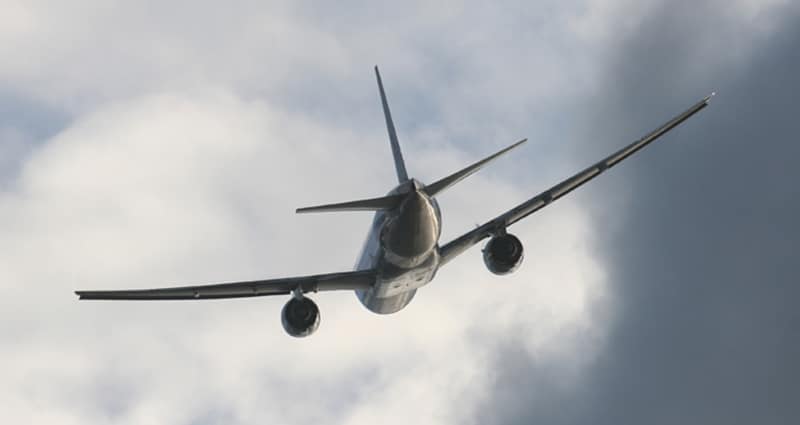Mitigating the Loss of Control In-Flight Epidemic

The FAA and NTSB consistently write, speak and regulate in an ongoing effort to mitigate the Loss of Control-Inflight (LOC-I) epidemic that has resulted in the loss of so many lives in commercial, corporate and general aviation. Both government entities and countless vendors address the recovery element of a LOC-I situation. The reality is that many LOC-I incidents could have been prevented. A viable upset training program needs to include both prevention and recovery.
Prevention includes building an awareness of the primary causal factors of LOC-I. There are three main categories for concern: 1) the environment, 2) aircraft systems anomalies and 3) aircrew human factors. Each appears straightforward in and of itself, but they are frequently intertwined in LOC-I incidents. Prior to every flight, all aircrew should be adequately prepared and take preventative measures to avoid the elements that put pilots and their aircraft at risk.
With regard to the environment, turbulence, thunderstorms and icing can cause aircraft upsets which, if not properly addressed, can lead to LOC-I. Aircraft systems anomalies include instrument failures, autopilot failures, and flight control and/or engine malfunctions that can cause abrupt deviations from the intended flight path. Undo attention focused on non-critical aircraft systems anomalies has, and will continue to, take pilots’ attention away from the task of aviating, navigating and communicating. Aircrew inattention, task saturation, spatial disorientation, instrument misinterpretation and fatigue can put a pilot well “behind the aircraft” and vulnerable to LOC-I. Any one of these characteristics can be deadly if not managed with training or eliminated with awareness.
Any of these contributors, alone or in combination, can lead to an aircraft upset. Aviation physiologists are now focusing on what happens immediately following: the surprise experienced by the flight crew, and the physiological response of startle that occurs to aircrew faced with this situation. Although pilots understand that autopilot can unexpectedly disengage, turbulence can happen in the vicinity of thunderstorms, and instrument misinterpretation can affect decision-making, many of them have no experience in how they would respond to these circumstances until it is too late. Fight, flight or freeze are the three core natural responses to surprise in a situation for which you have not been trained—and none of them are good in an airplane! The human element is a key factor in almost every fatal accident. Only by training in an aircraft can you be prepared for the physiological response that your body will produce. You cannot simulate automatic muscle response, adrenalin rush, raised heart rate and blood pressure. They will only occur when you are in an airplane and actually experience the surprise and startle associated with being upset.
On-aircraft Upset Prevention and Recovery Training (UPRT) is the best method to address LOC-I. If the aircraft you fly on a daily basis has a high enough safety margin to allow you to practice upsets1,2 and spins, then you are flying the ideal training platform. Most commercial, corporate and GA pilots do not have that luxury. What each pilot does have is the opportunity to commit time and resources to a UPRT provider who can offer an aircraft build for dynamic maneuvering at a very low cost compared to type-specific simulators and/or flight time in one’s primary aircraft. UPRT is designed to slowly increase stress with an aircraft that can safely tolerate incorrect or delayed recovery techniques during the learning process.
After you experience unusual attitudes, including stalls and spins in an aircraft, each pilot must return to his or her type-specific aircraft simulator, in accordance with AC 120-111.3 Nothing can replace the muscle memory required to disconnect your own autopilot, the forces required to arrest a descent, or rudder input needed to bring your aircraft back to balanced flight. You have to actually replicate the procedures that you learned during your on-aircraft training in your type-specific aircraft simulator. If you fly in various aircraft types, then you need to take the time to replicate upset recovery procedures in each and every platform for the same muscle memory requirements.
Dedicated flight academics and on-aircraft UPRT are the most effective ways to mitigate the LOC-I threat for you and your flight department. It is the best investment for every pilot. It is truly training you cannot afford to live without.TM
Resources:
1. Pitch attitude greater than 25°, nose up; Pitch attitude greater than 10°, nose down; Bank angle greater than 45°; Within the above parameters, but flying at airspeeds inappropriate for the conditions.
2. U.S. FAA Airplane Upset Recovery Training Aid, Revision 2, 443 pages, 25.8 MB
3. FAA Advisory Circular 120-111. Upset Prevention and Recovery Training.

Prevailance Aerospace is a UPRT provider that has been working with corporate, government, and general aviation pilots to improve safety in the aviation industry. Prevailance Aerospace uses Extra 300 Series Aircraft for training and our pilots are experienced aviation professionals from various military and general aviation backgrounds. We know that successful aviation endeavors are accomplished through an uncompromising commitment to safety, impeccable professionalism, tremendous attention to detail, and constant improvement.
http://prevailanceaerospace.com
© 2025 Prevailance Aerospace. All Rights Reserved.
Next ArticleRelated Posts

Emerging Security Threats in Business Aviation: Activism and Down-Route Risks
Security incidents affecting business aviation do not need to involve violence to have an operational impact. A protest delaying crew movements, blocking access to a hangar or resulting in an unauthorized photograph of a sensitive client can all trigger reputational, financial or compliance concerns for operators.

Navigating Geopolitical Uncertainty Using Business Aviation
Bigger business jets mean bigger fuel tanks, longer trips, more border crossings, and bigger wallets! With an equipment upgrade also comes the requirement for a knowledge upgrade.

